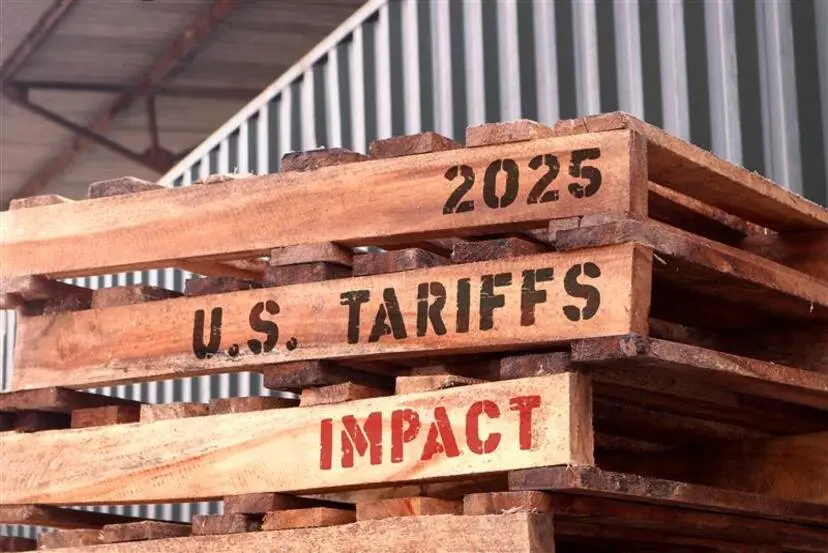The global trade landscape has ever-changing circumstances. The proof of this is seen in the year 2025, where there seems to be a revival of strong U.S. protectionism under what many are calling Trump Tariffs 2.0. This second wave of tariffs is not just an update of a previous policy; it is a serious interruption that touches everything from product costs to international sourcing methods.
The Second Wave of Tariff-Related Changes
During 2018, the first Trump-era tariffs were hitting the headlines, targeting goods from China, Mexico, and the EU. Today, Trump Tariffs 2.0 is back with a renewed intensity, broadening its scope and tightening its grip around global imports.
- Protectionism with a Purpose
The goal of the increased tariffs is to protect manufacturing in the United States and safeguard American industry. The reasoning is simple: make imports prohibitively expensive and give a competitive edge to domestic producers. While this may sound good for the domestic industry, the repercussions will be felt along the entire global supply chain.
- Global Suppliers Are Rethinking Their Strategy
A few years ago, companies that were dependent on low-cost production are now finding themselves forced to re-evaluate their sourcing decisions. Companies are shifting to off-tariff countries, such as Vietnam or India, or Mexico. This practice is popularly known as diversification of the supply chain, which is one of the major responses to the new revolutionary trade restrictions.
- Driving Product Prices Higher
This means that these imported goods now come with extra duties and fees. From raw materials to finished products, it is either absorbed or pushed downstream to consumers. The effects of these tariff-related price hikes are fully felt in industries like electronics, automotive, and textiles.
The Rise of Nearshoring
Affected companies respond by embracing a form of outsourcing which is called nearshoring. It means producing goods closer in proximity, shortening the costs and transit time, providing more control over operations, and better timing.
- Customs Compliance Becomes Vital
Increased tariffs will also necessitate accurate documentation and classification of items for tariff purposes. Penalties, delays, and increased costs can lead to mistakes in these filings. So, for businesses now learning how to navigate the terrain of the new rule, customs compliance in the long run is considered a top priority in the showcase of operational efficiency.
- The SMEs Are Feeling the Pressure
Among the most affected are small and medium-sized enterprises. Unlike large corporations that possess negotiating power and enough resources to absorb tariff costs or evade duty in trade, these smaller companies with fewer resources would just have to deal with the loss of margin. For many SMEs, this new wave of U.S. protectionism means tighter margins and a race against time to find new suppliers or new markets.
Trade Agreements and Political Moves
International trade agreements are being pressed due to new tariffs. Conversations with allies are turning more tense, and retaliatory tariffs are again being considered. Trade policy uncertainties created by these scenarios are further complicating businesses’ ability to plan with confidence.
- Promoting the Use of Technology and Automation
In light of rising costs for operations, many companies are now investing in supply chain technology and automation. For firms to stay competitive, they can invest in technology that would allow them to respond to changes in tariffs with agility, from AI-driven inventory management to predictive analytics.
- Adapting Warehousing and Inventory Strategies
Just-in-time inventory methods are giving way to inventory planning. By storing more materials within national boundaries, firms seek to reduce the chances of unexpected disruptions coming from changing tariffs or borderline delays. Along with that, it requires enhancements to warehousing strategies and distribution planning.
- Environmental Impact Gets Visibility
Carbon emissions from extended logistics chains are increasing as companies alter routes and change financing. Supply chain sustainability is becoming an urgent topic as companies are shifting to greener ways to address protectionist trade policies.
- What It Means for Consumers
End-consumers are directly affected, with tariffs impacting the prices of goods and their availability in daily purchasing activities. Consumer behavior is evolving, and people are becoming increasingly aware of product origins and price trends.
Final Thoughts
Whether you believe in the verdict concerning the politics or not, there is one certainty: adapting strategically is mandated by the 2025 trade environment. Businesses must remain highly flexible, in the know, and always ready to change course based on tariff changes, new diplomatic realities, or emerging supply chain trends.
If the challenges created by the altered supply chain seem overwhelming, consider leveraging some of the tools available under Credlix. Credlix helps you stay agile in times of uncertainty, from supply chain financing to shipment cost calculators. Think of it as your trade-change partner through tariff adaptations—agility powered by technology, compliance, and financial aid that keeps your business afloat.
Understand How to Make Your Supply Chain Tariff-Proof




